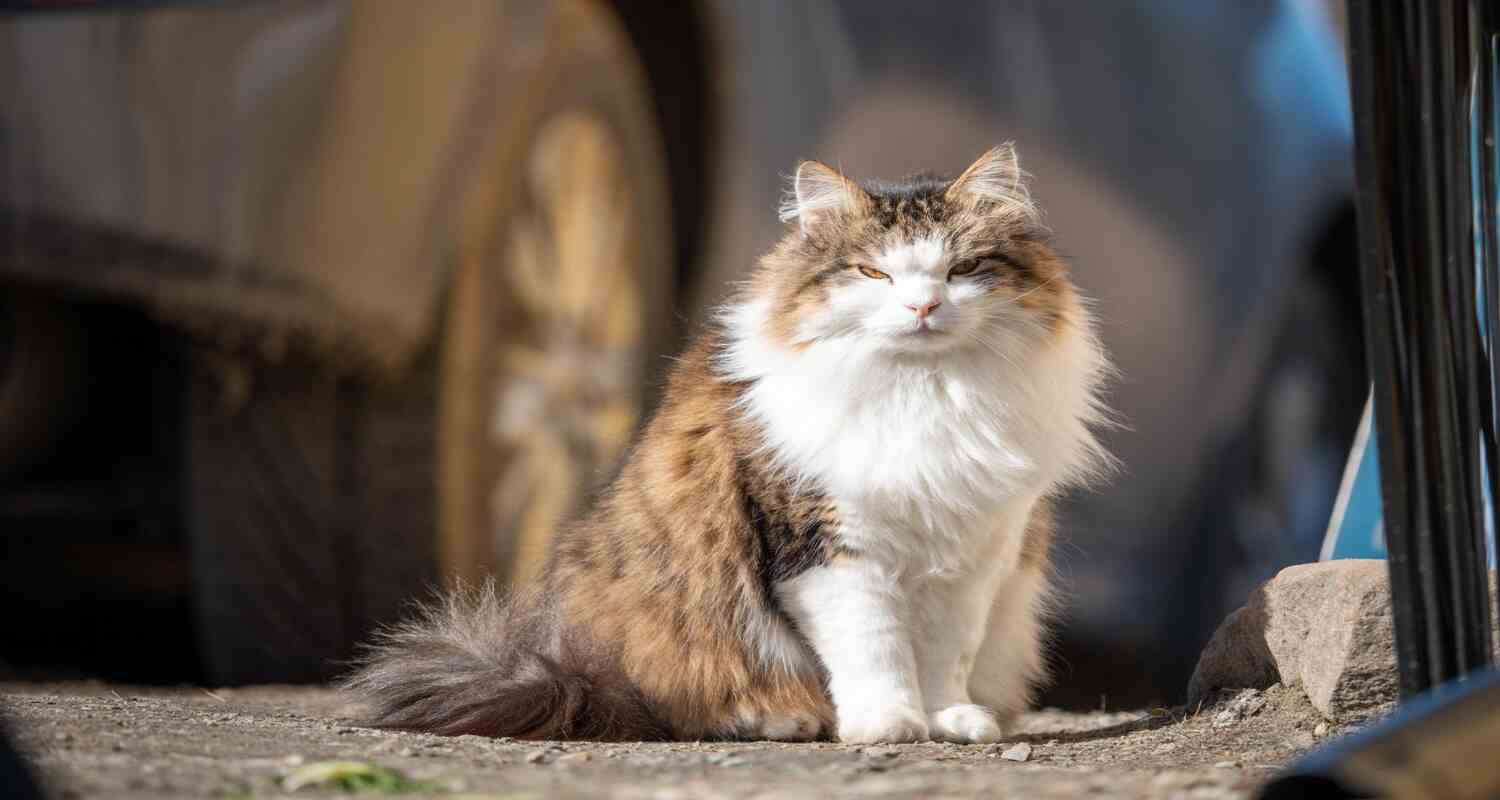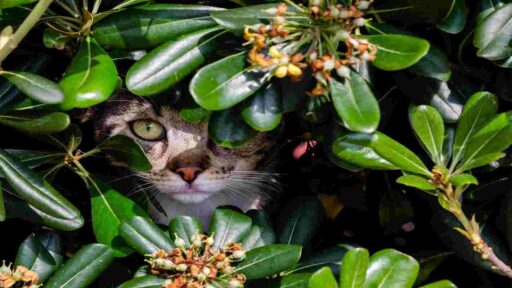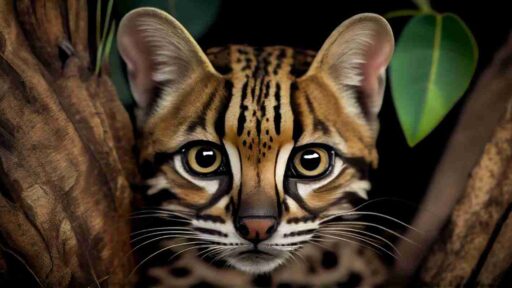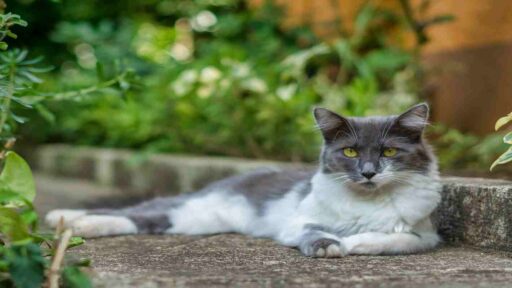The Norwegian Forest Cat, known for its robust build, long, thick double coat, tufted ears, and bushy tail, represents a breed of domestic cat Originating from Norway, these cats have a history rooted in Norwegian folklore and history. They are typically large and muscular, with a friendly, playful, and intelligent nature. Known for their adaptability to harsh climates, they have a dense, water-resistant fur that helps them thrive in colder environments. Renowned for their beauty, resilience, and hunting prowess, Norwegian Forest Cats have gained international recognition as a distinct and beloved breed.
Norwegian Forest Cat Characteristics
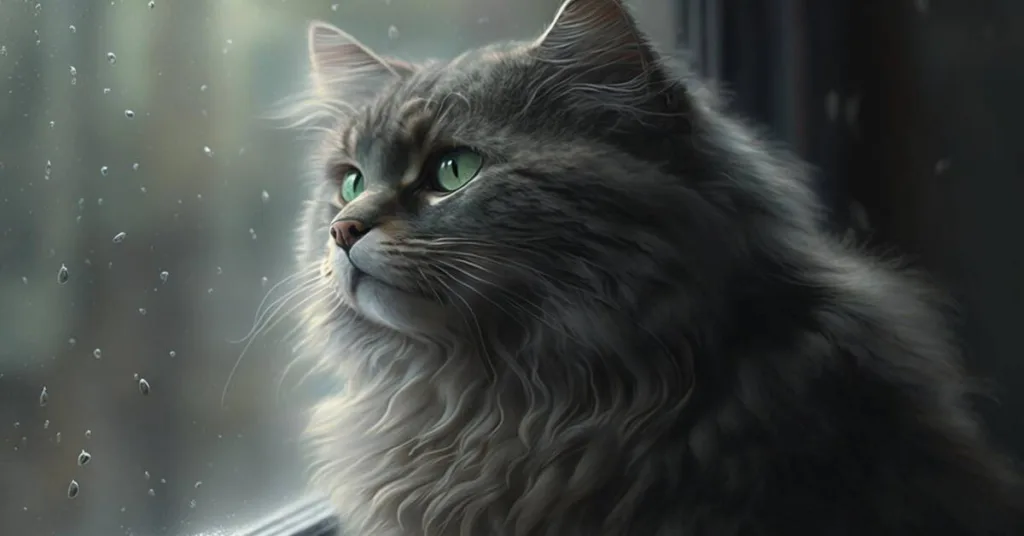
Several distinctive characteristics define the breed of the Norwegian Forest Cat:
- Appearance: They have a robust and muscular build, a dense double coat with a water-resistant top layer, tufted ears, and a bushy tail. Their fur varies in length, being longer around the neck, chest, and tail.
- Size: They are a large and sturdy breed, with males weighing between 12-16 pounds and females slightly smaller.
- Personality: Norwegian Forest Cats are often described as friendly, intelligent, and playful. They enjoy climbing and exploring, showcasing their agile nature. They are typically affectionate towards their families but may be reserved around strangers.
- History: Originating from Norway, these cats are believed to have a history dating back hundreds of years, known for their ability to survive harsh Nordic climates.
- Grooming: Due to their thick coat, they require regular grooming, especially during shedding seasons, to prevent matting and tangles.
- Health: Generally, they are a healthy breed, but they can be prone to certain genetic conditions like hip dysplasia and heart issues.
Cat enthusiasts cherish Norwegian Forest Cats due to their beauty, intelligence, and adaptability, making them renowned companions overall.
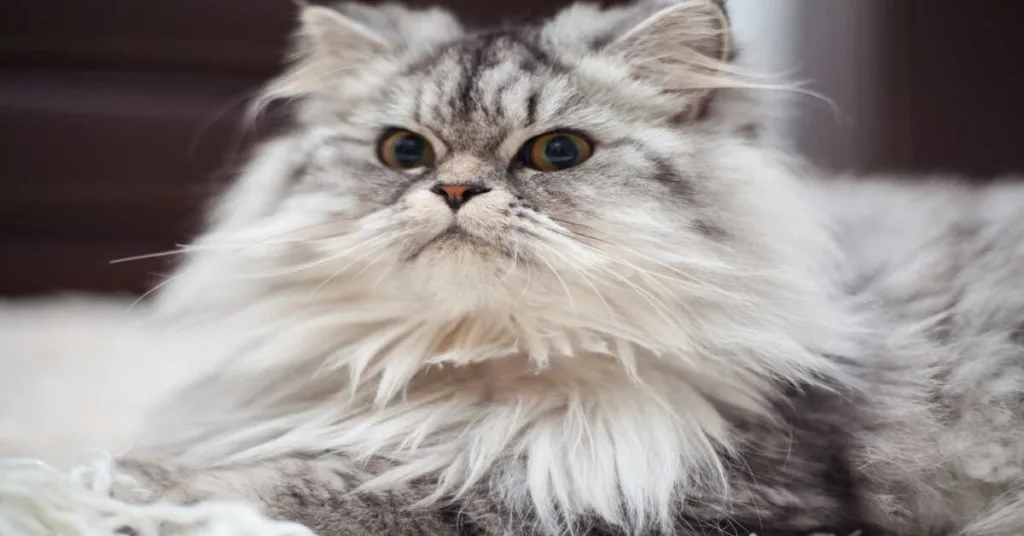
Norwegian Forest Cat Origin‘s
The Norwegian Forest Cat’s origins trace back to Norway, where they evolved over centuries. While the exact origin remains somewhat unclear, these cats have a rich history deeply rooted in Norwegian folklore and historical narratives. They were valued as skilled hunters on Norwegian farms and ships, consequently aiding in controlling rodent populations. Moreover, their adaptability to the harsh Nordic climate contributed to the development of their distinctive double-layered, weather-resistant coat.
These cats became an integral part of Norwegian history, with mentions in local legends and tales. Over time, their lineage and survival abilities earned them recognition and admiration within Norwegian culture. The breed’s resilience and ability to thrive in rugged landscapes further solidified their place in the country’s heritage.
Efforts to preserve and promote this distinct breed eventually led to its recognition and popularity beyond Norway’s borders, gaining international acclaim for its unique characteristics and captivating personality traits.
The Norwegian Forest Cat’s Personality and Temperament
People often describe the Norwegian Forest Cat as having a friendly, gentle, and intelligent nature, forming strong bonds with their families as affectionate companions. They tend to be sociable but can also display a certain level of independence. Despite their size and sometimes wild appearance, they are typically friendly and enjoy being around people.
Known for their playful and curious demeanor, Norwegian Forest Cats retain their playful nature well into adulthood. They often enjoy interactive games and climbing, showcasing their agility and intelligence. While they may be affectionate with their family members, they might exhibit a bit of reserve around strangers, observing before warming up to new people.
These cats are adaptable and can thrive in various environments. They are generally good with children and other pets, making them an excellent choice for families. Their loving and loyal nature, coupled with their playful spirit, contributes to their charm and endears them to many cat lovers.
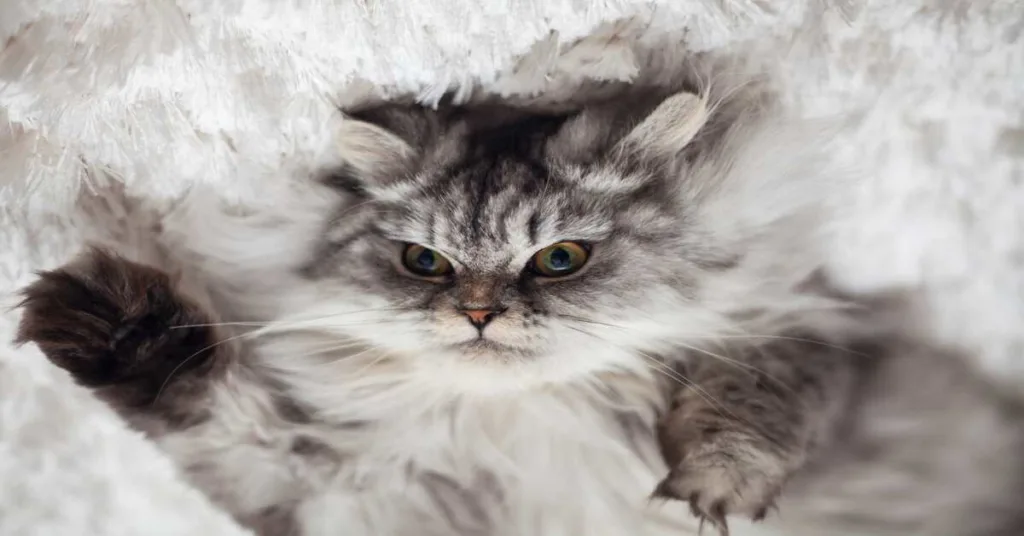
The Norwegian Forest Cat’s Care
Caring for a Norwegian Forest Cat involves several key aspects:
- Grooming: Regular grooming is essential due to their thick, water-resistant coat. Brushing their fur a few times a week helps prevent matting and reduces shedding, especially during seasonal changes.
- Nutrition: Providing a balanced diet tailored to their age, weight, and activity level is crucial. High-quality cat food, both dry and wet, can meet their nutritional needs.
- Exercise and Play: These cats are active and enjoy climbing and exploring. Providing cat trees, interactive toys, and play opportunities can keep them mentally and physically stimulated.
- Healthcare: Regular veterinary check-ups, vaccinations, and parasite control are vital for their well-being. Discuss with your vet about preventive care and any breed-specific health considerations.
- Environment: Creating a safe and stimulating environment is important. Offering hiding spots, elevated perches, and scratching posts can fulfill their instincts and keep them happy.
- Affection and Attention: Their affectionate nature is a known trait among Norwegian Forest Cats. Spending quality time, offering affection, and engaging in interactive play strengthens the bond between you and your cat.
The Norwegian Forest Cat’s History
The Norwegian Forest Cat’s history is intertwined with Norway’s rich cultural heritage. This breed’s origins can be traced back centuries when they were valued as adept hunters on Norwegian farms and ships. Their robust build and dense, water-resistant double coat enabled them to thrive in Norway’s harsh climate.
These cats played a significant role in controlling rodent populations, consequently earning a place in local folklore and historical narratives. Additionally, their adaptability and survival skills in the Nordic landscapes made them an integral part of Norwegian heritage. Subsequently, over time, efforts to preserve and promote this distinct breed led to international recognition. As a result, their lineage, characterized by resilience and their ability to withstand rugged environments, helped establish the Norwegian Forest Cat as a beloved breed worldwide.
Many cat enthusiasts around the globe cherish them not only for their history but also for their striking appearance and amiable nature, making them admired companions today.
FaQs
What do I need to know before getting a Norwegian Forest Cat?
Before getting a Norwegian Forest Cat, here are some essential things to consider:
- Space: They earn recognition for their affinity for climbing and exploring. They thrive in spacious environments with room for climbing structures and play areas.
- Grooming: Their thick, double-layered coat requires regular grooming to prevent matting and reduce shedding. Prepare for regular brushing sessions.
- Activity Level: Norwegian Forest Cats are active and playful. They enjoy interactive toys and activities, so ensure you can provide them with ample play and mental stimulation.
- Healthcare: Like all cats, they need regular veterinary check-ups, vaccinations, and preventive care. Some breeds might have specific health considerations to discuss with your vet.
- Affectionate Nature: They’re known for their affectionate and loyal personalities. They often form strong bonds with their families, so be ready to provide love and attention.
- Adaptability: They tend to adapt well to various environments, making them suitable for families with children and other pets
What are some interesting facts about Norwegian Forest Cats?
intriguing facts about Norwegian Forest Cats:
- Breed Origin: The Norwegian Forest Cat, or “Wegie,” has a history dating back hundreds of years in Norway, where it was revered for its hunting prowess and adaptability to harsh climates.
- Nature’s Survivor: Known for their robust build and dense, water-resistant double coat, these cats were adept at surviving in Norway’s rugged landscapes.
- Playful Personality: Despite their size, Norwegian Forest Cats maintain a playful and curious nature well into adulthood, enjoying interactive play and climbing.
- Distinctive Appearance: They have a striking appearance with a majestic mane, tufted ears, and a bushy tail, resembling their ancestral roots in the Norwegian forests.
- Adaptability: Wegies are highly adaptable, thriving in various environments, making them well-suited for households with children and other pets.
- Affectionate Companions: Known for their affectionate and loyal nature, they often form strong bonds with their families, enjoying affectionate interactions.
How do I know if my cat is part of the Norwegian Forest Cat?
Identifying if your cat is part of the Norwegian Forest Cat breed can be challenging without proper documentation or a pedigree. However, certain characteristics might suggest a resemblance to this breed:
- Physical Attributes: Look for a cat with a robust build, a thick double coat, tufted ears, and a bushy tail. Norwegian Forest Cats are generally large and muscular with distinctive fur.
- Behavioral Traits: These cats are often friendly, playful, and intelligent. They might exhibit a love for climbing and exploring, showcasing their active nature.
- Origin and Pedigree: Cats with a documented lineage tracing back to Norwegian Forest Cats are more likely to be part of the breed. If your cat has papers or comes from a breeder specializing in this breed, it increases the likelihood.
- Resemblance to Breed Standards: Compare your cat’s physical appearance and behavior to the breed standards outlined by cat associations or clubs that recognize the Norwegian Forest Cat.
However, many cats might share similarities with this breed without being purebred Norwegian Forest Cats
How do I make my Norwegian Forest Cat happy?
To ensure your Norwegian Forest Cat is happy and content, consider these tips:
- Play and Exercise: Engage them in interactive play sessions using toys or activities that stimulate their hunting instincts. They enjoy climbing, so providing cat trees or perches allows them to explore and exercise.
- Grooming: Regularly groom their thick coat to prevent mats and tangles. This grooming time can also serve as a bonding moment between you and your cat.
- Enrichment: Create an enriching environment with hiding spots, scratching posts, and puzzle toys. Offer mental stimulation through interactive toys or treat-dispensing puzzles to keep them mentally engaged.
- Affection and Attention: Spend quality time with your cat, offering affection and attention. Norwegian Forest Cats often form strong bonds with their families and enjoy companionship.
- Safe Environment: Ensure a safe and stress-free environment. These cats appreciate having their own space and feeling secure in their surroundings.
- Routine and Stability: Cats thrive on routine, so maintaining a consistent schedule for feeding, playtime, and sleep can contribute to their happiness.
By providing a stimulating environment, and affection, and meeting their physical and mental needs, you can ensure a happy and fulfilling life for your Norwegian Forest Cat.
For more about the Norwegian Forest Cat!

